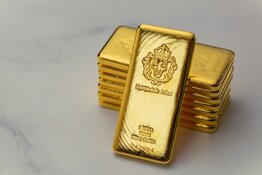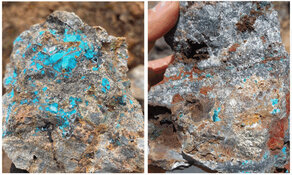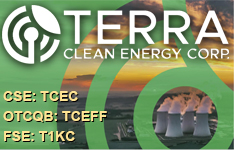JK: In the past few of the 20 years I've been going to this conference—and this year is no exception—it has become increasing difficult to pick up any prominent buzz, be it about a sector being red hot or be it about a major new discovery.
TGR: Why do you suppose that's happening?
JK: The reason is simple; this conference has become so big, so global. What in 1994 would have been the big Voisey's Bay's buzz that everybody was talking about or Bre-X in the following year, even if something like this did come along now, the collective size of 400 companies exhibiting would dwarf it. . .There are several hundred trade show exhibitors; numerous talks covering everything from country-focused issues to deposit models to new discoveries and so on. It's very difficult for any single thing to stick out.
Even worse, because it is now so large and dispersed, you do not have that intensity of networking of the past, the random networking where you would bump into people you hadn't seen for a long time and hear about this or that. By the end of the conference you had all these bits and pieces gelling in your head and you could say, "Oh, yeah, this was what was interesting." No, now it's more you know in advance what you're looking for; you make the sessions; you track down those companies, and you have the face-to-face you planned with these. So, the old aspect of serendipity of bumping into stuff and stuff floating to the surface just does not happen in this environment.
TER: Did you come away with any sense of how people are feeling about the economy?
JK: There was no irrational exuberance at all at this conference. In fact, it's a bit like a teeter-totter poised to go either way. There is hope that China will pull the global economy back on track and reinvigorate Europe and the United States. On the other hand, there also is concern that this will fall apart, and that as the fiscal stimulus packages come to an end interest rates start to rise that we will see a double-dip recession in the North American markets. And if that happens to coincide with a problem in China, which has been going hell-bent at an incredible pace thanks to its $585 billion fiscal stimulus program, there is concern that this could end very badly.
So we are almost in the eye of a hurricane, and everybody's wondering where we will be next year.
TER: Which way are you leaning?
JK: My own feeling is that if we come out of this with the global economy back on track and the disparate signs of life that we see in the North American economy are actually more than just flickers, next year we should see the supercycle that dominated the talk at this conference from '03 to '08. This time it will be taken seriously, and massive amounts of money will flow into the sector. But as I say, it all hinges now on where the global economy goes.
TER: Anything else that stands out from your PDAC experience this year?
JK: Quite a few of the rare earth companies were represented, there were several rare earth receptions and a whole morning devoted to talks about the rare earth deposits, geology, market and so on. These were surprisingly well-attended for a Wednesday morning, when traditionally 90% of the delegates are still in bed. So that is actually a pretty good indicator of the interest in this space.
Particularly with the assistance of one of the stocks listed going up during the days of the conference, I would say that the rare earth space is probably on the threshold of achieving a whole new level of serious attention from investors.
TER: Any companies in that space that you find particularly interesting?
JK: The interest has been a lot of talk and a lot of tire-kicking, but not really a lot of money going into the treasury. This may change in the not-too-distant future, though.
TGR: How so?
JK: I had an interesting meeting with a representative of Molycorp Minerals, who explained their timeline of activities. If I understand it correctly, we could see a Molycorp IPO before the summer. What the institutional market is missing in the rare earth sector is a vehicle large enough for serious investments. There has been incredible media buzz about the rare earth space. The Chinese are very clearly interested in seeing rare earth deposits developed outside of China to take the pressure off them to export what they consider a resource they need to hoard for the long term.
Having said that, nobody wants to buy stocks such as Quest Uranium Corporation (TSX.V:QUC) to any large degree. With these smaller players, there are so many uncertainties about whether the feasibility study will indicate a profit margin, whether they'll ever get a permit to get to production, or whether the metallurgical process actually will work. An aversion to investing in these very risky single-asset projects has inhibited the serious money coming into these plays. If a major company such as Molycorp does an IPO and lists on the New York Stock Exchange, though, it will validate the space and pull a lot of money into all the smaller companies. So I sense the timeliness for this improving over the next two or three months.
TER: Do you see any other companies besides Molycorp with an asset base that could actually pull off something as significant as an IPO and list a rare earth play on the New York or Toronto Exchange?
JK: A counterpart is Lynas Corporation Ltd. (ASE:LYC), listed on the Australian Stock Exchange. This company has a market cap of AU$815 million, and last year raised AU$450 million basically from institutional investors around the world after the Australian Foreign Investment Review Board said no to a Chinese proposal to put up debt and equity financing in exchange for majority control of Lynas. So this has already happened in Australia, but that market is not as liquid and popular as, say, the New York Stock Exchange.
I wouldn't be surprised if Lynas Corp. also seeks a New York Stock Exchange listing; however, the significance of Molycorp is that this is a home-grown, American deposit, and on April 1, we're supposed to hear the results of the RESTART bill proposal, an analysis of what America's vulnerabilities are to rare earth supply. If they decide that we have a problem here, the intensity of the hand-wringing about what to do about it would increase and companies such as Molycorp will receive a lot of attention as at least a major part of the solution to the problem. As you may know, Molycorp has been in the process of getting its Mountain Pass deposit back into production, and it also has the ability and the knowledge base necessary to acquire other projects elsewhere in the world to beef up its rare earth supply potential.
TER: Thank you, John. You also mentioned RESTART in a previous Energy Report interview a couple of months ago ("John Kaiser: Balancing Security of Supply Worries with Optimism on the R&D Front"). We recently saw a news release about this recently, and for readers who aren't familiar with it, RESTART stands for "Rare Earth Supply-chain Technology and Resources Transformation" (for more information, see below).
John Kaiser, a mining analyst with 25-plus years of experience, produces the Kaiser Bottom-Fish Report. It specializes in high-risk Canadian resource sector securities and seeks to provide investors with a framework for intelligent speculation. His investment approach integrates his "bottom-fishing strategy" with his "rational speculation model." After graduating from the University of British Columbia in 1982, John joined Continental Carlisle Douglas, a Vancouver brokerage firm that specialized in Vancouver Stock Exchange listed securities, as a research assistant. Six years later, he moved to Pacific International Securities as research director and also became a registered investment adviser. Not long after moving to the U.S. with his family in 1994, John cast his own line in the water, so to speak, with publication of the premier edition of the Kaiser Bottom-Fish Report.
******
Note: RESTART, proposed as a means of reviving a competitive rare earths industry in the U.S., has been put forward as potential legislation by an organization known as USMMA, the United States Magnet Materials Association. USMMA reported submitting this proposal, designed to create a path forward toward "a ‘whole-of-government' approach to resolving the Rare Earth Elements (REE) supply crisis," to a number of federal entities—the U.S. Department of Commerce, U.S. Department Energy, U.S. Department State, U.S. Department of Defense, Office of the U.S. Trade Representative, and Office of Science and Technology Policy within the Executive Office of the President. The RESTART proposal calls for up to $1.2 billion in funding to reestablish domestic rare earth mining as well as U.S. facilities for refining, alloying, melting and production of rare earths and rare earth-based products.
USMMA said that it has already successfully advocated for inclusion of a congressionally-mandated study of the rare earth supply-chain in the FY10 National Defense Authorization Act. The organization was founded by three high-performance magnet producers and suppliers in 2006: Thomas & Skinner, Inc. (Indianapolis, IN), Hoosier Magnetics (Ogdensburg, NY) and Electron Energy Corporation (Landisville, PA) in 2006. U.S. Rare Earths, Inc. (a private company) joined the group in 2009.
******
Want to read more exclusive Energy Report interviews like this? Sign up for our free e-newsletter, and you'll learn when new articles have been published. To see a list of recent interviews with industry analysts and commentators, visit our Expert Insights page.
DISCLOSURE:
1) Sally Lowder of The Energy Report conducted this interview. She personally and/or her family own none of the companies mentioned in this interview.
2) The following companies mentioned in the interview are sponsors of The Gold Report or The Energy Report: None.
3) John Kaiser—From time to time, Streetwise Inc. and its directors, officers, employees or members of their families, as well as persons interviewed for articles on the site, may have a long or short position in securities mentioned and may make purchases and/or sales of those securities in the open market or otherwise. John Kaiser, personally and/or his family is not paid by any of the companies mentioned in this interview.










































